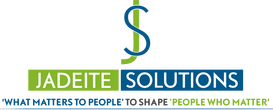The old school of thought aimed at creating a measurable balance among students. Thus everyone was taught the same thing and expected to reach a preset standard. Einstein and Ramanujan amongst others faced a lot of challenge when they adopted this approach. The conventional wisdom which replaced the old school, recognized the inherent strengths of an individual, and endeavored to focus on those, rather than working on the weaknesses. But this approach has also had limited success.
We often debate between two subjects – Science and Art, assuming them to be completely different things rather than being the two sides of the same coin. It is requested from the readers to show some patience before discarding the statement entirely.
Science by definition follows logical thinking while Art is a manifestation of creativity. It is however difficult for one to exist without support of the other – for real success to be achieved in any field.
Let’s discuss about Science first. Inductive reasoning works from specific to more generic terms. It is the process of generalizing the observations into a statement (theory) which is true for a number of situations and which explains the underlying reason for the occurrence to some extent.
Deductive reasoning is the opposite and works from generic to more specific terms. It is the process of extending the theory to explain the real situations encountered. Deductive reasoning is a mechanical process while Inductive reasoning is a creative process, which cannot be automated. Inductive reasoning involves moving from “zero” to “one” (creating a new concept), while deductive reasoning involves moving from “1” to “n” (generating greater understanding of the situation)
Let’s look at Art now. Painting involves a lot of creativity, but a good artist is well aware of the logical aspects of the elements involved. For example, what kind of colors to use, usage of different paper and the brush make different effects. Absence of this knowledge would severely constrain the artist, and hamper true expression of his genius.
Cooking is another example where there is a convergence of Science and Art. The flavor and look of the recipe is indeed the creation of the cook, but he necessarily needs to understand the logical side of the elements, and why they would produce the desired result, like the degree of heat, type of heat, duration of the process, the flavor of ingredients etc.
People often describe themselves as strictly “right-brained” or “left-brained,” with the left-brainers bragging about their math skills and the right-brainers touting their creativity. That’s because the brain is divided down the middle into two hemispheres, with each half performing a fairly distinct set of operations. The brain’s right hemisphere controls the muscles on the left side of the body, while the left hemisphere controls the muscles on the right side of the human body. Winking the right eye is the work of the left side of the brain.
In general, the left hemisphere is dominant in language: processing what one hears and handling most of the duties of speaking. It’s also in charge of carrying out logic and exact mathematical computations. When we need to retrieve a fact, our left-brain pulls it from our memory.
The right hemisphere is mainly in charge of spatial abilities, face recognition and processing music. It performs some math, but only rough estimations and comparisons. The brain’s right side also helps us to comprehend visual imagery and make sense of what we see. It plays a role in language, particularly in interpreting context and a person’s toneThe brain carefully balances and assigns control of certain functions to each side – it’s nature’s way of ensuring that the brain ultimately splits up tasks to maximize efficiency. Most people are right-hand dominant, which is actually controlled by the left side of the brain.
Nature has a way of giving us a lead in some areas, while leaving a lag in other, thus creating a goal to be achieved by the specific individual. It is essential for the individual to overcome that disadvantage to achieve equilibrium, and be what he/she is meant to be, while at the same time improving his areas of strength. An important thing to note is that balance or equilibrium is unique for each individual, and cannot be compared with that of another individual. Thus an equilibrium point for one (say A) may not be the equilibrium point for another (say B).
It is essential for an individual to logically assess oneself for where he is (current status), the balance that can be achieved (goal setting), and the path that needs to be covered (gap analysis). Good mentors provide invaluable advice, as it is extremely difficult for anyone to assess their own self, or to see what one is truly capable of achieving.
Harmony and balance are omnipresent. The journey from a seed to a tree is fraught with challenges, uncertainties – some within control while others outside the circle of influence, yet in some way, it is dependent on the entity in question. Nature has its own unique way of giving an advantage, as well as setting a goal that needs to be achieved.
Let’s commence our journey towards our balance – to achieve our equilibrium point, and be what we are meant to be.
Tags: Strategic planning; Deductive reasoning; Inductive reasoning




